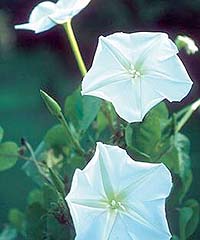Rubber balls wouldn’t bounce very high at all if it wasn’t for some Mexican ingenuity. Think of the hours of pleasure that a simple rubber ball gave you as a child. Would you have had as much fun if it hadn’t bounced? I don’t think so… but what’s the secret ingredient?
It has long been known that the pre-Columbian peoples of Mexico had rubber objects, including balls. The basic ingredient was the sap or latex of the native Panama Rubber Tree (Castilla elastica).
A few years ago, Dorothy Hosler, an associate professor of archeology and ancient technology at the Massachusetts Institute of Technology, and two of her colleagues, chemist Sandra Burkett and undergraduate student Michael Tarkanian, realized that unprocessed pure latex is sticky and becomes brittle when dry. Put simply, balls made of pure latex don’t bounce, but shatter.
So, they then set out to tackle the mystery of what makes rubber balls bounce. In a landmark paper entitled, “Prehistoric Polymers: Rubber Processing in Ancient Mesoamerica,” published in the June 18, 1999, issue of Science, they revealed how a little Mexican ingenuity turned sticky, brittle latex into a stretchy elastic. Put simply, they revealed what made rubber balls bounce.
The magic ingredient is a little sap from the Morning Glory (Moonflower) vine! The addition of sap to latex begins complex chemical changes that provide a much improved material for tools, figurines and medicines, in a process akin to vulcanization, invented three thousand years later by Charles Goodrich. The addition of Morning Glory (Ipomoea alba) sap to otherwise brittle rubber also resulted in balls suitable for the development of Mexico’s ancient sport of Ulama.
How did Hosler’s team arrive at this startling conclusion? Documentary sources and ethnographic research suggested that Indians mixed natural latex with the juice of the morning glory vine, a plant prized for its curing properties. The researchers crushed some Morning Glory vines and squeezed the juice into a bucket containing the latex. After stirring for 15 minutes, the liquid latex solidified into a white mass, pliable enough to be formed by hand into a ball. The researchers made a ball about 3.7 inches (9.5 cm) in diameter and, lo and behold, it bounced!
When they used nuclear magnetic resonance scans to examine rubber balls dating back to 1600 B.C. that had been found in Veracruz and Chiapas, they were able to conclude that these had been made in a similar way.
Is it really surprising that pre-Columbian Indians discovered this chemical trick thousands of years ago? Well, perhaps not as surprising as you may think, since the two plants, Castilla elastica and Ipomoea alba often grow in close proximity. In fact, the Morning Glory vine often twines itself around the rubber tree, making it quite likely that a careless rubber tapper accidentally contaminated the latex being collected with a little (crushed) Morning Glory vine: an accident that turned out to have incredibly serendipitous results.
Whatever happened all those thousands of years ago, the mystery of why rubber balls bounce has finally been solved…
This is an edited version of an article originally published on MexConnect – Click here for the original article
Sports are not specifically discussed in Geo-Mexico, but the music, dance, language and cuisine of Mexico, together with cultural regions, are discussed in chapter18 of Geo-Mexico: the geography and dynamics of modern Mexico.
One Response to “The secret ingredient from Mexico that made rubber balls bounce”
Sorry, the comment form is closed at this time.

Pretty nice post. I just stumbled upon your weblog and wanted to say that I’ve truly enjoyed surfing around your blog posts. In any case I will be subscribing to your feed and I hope you write again very soon!